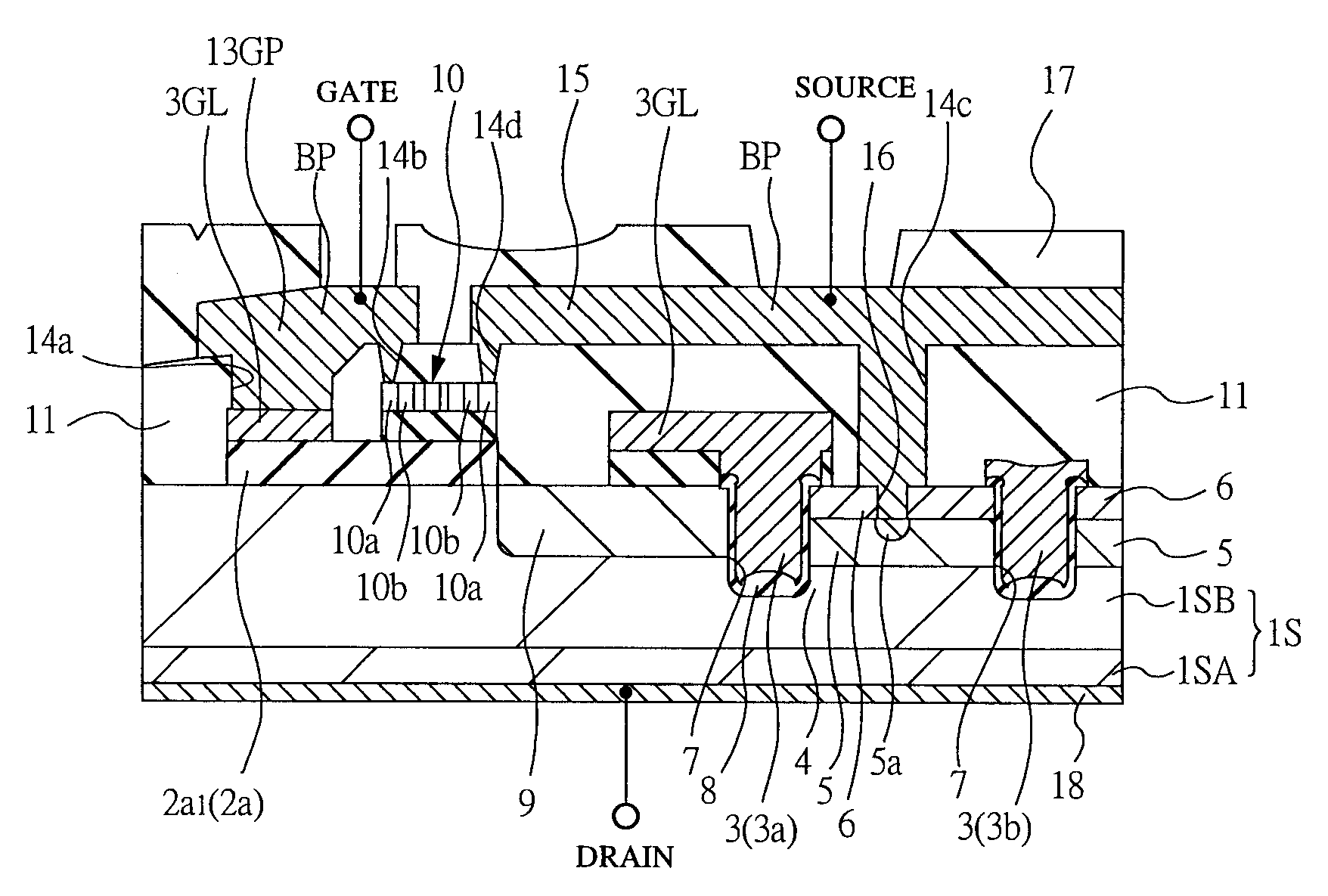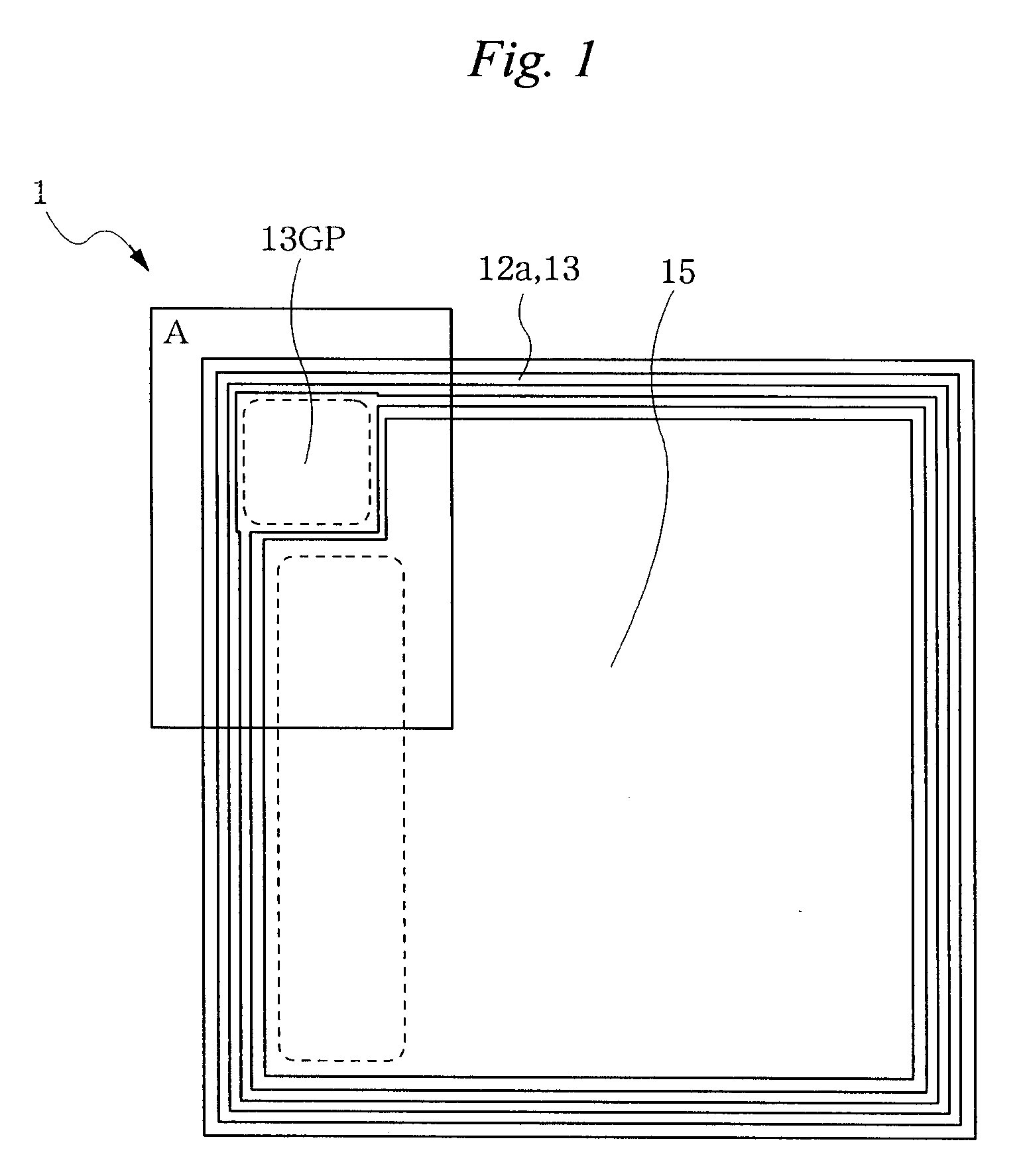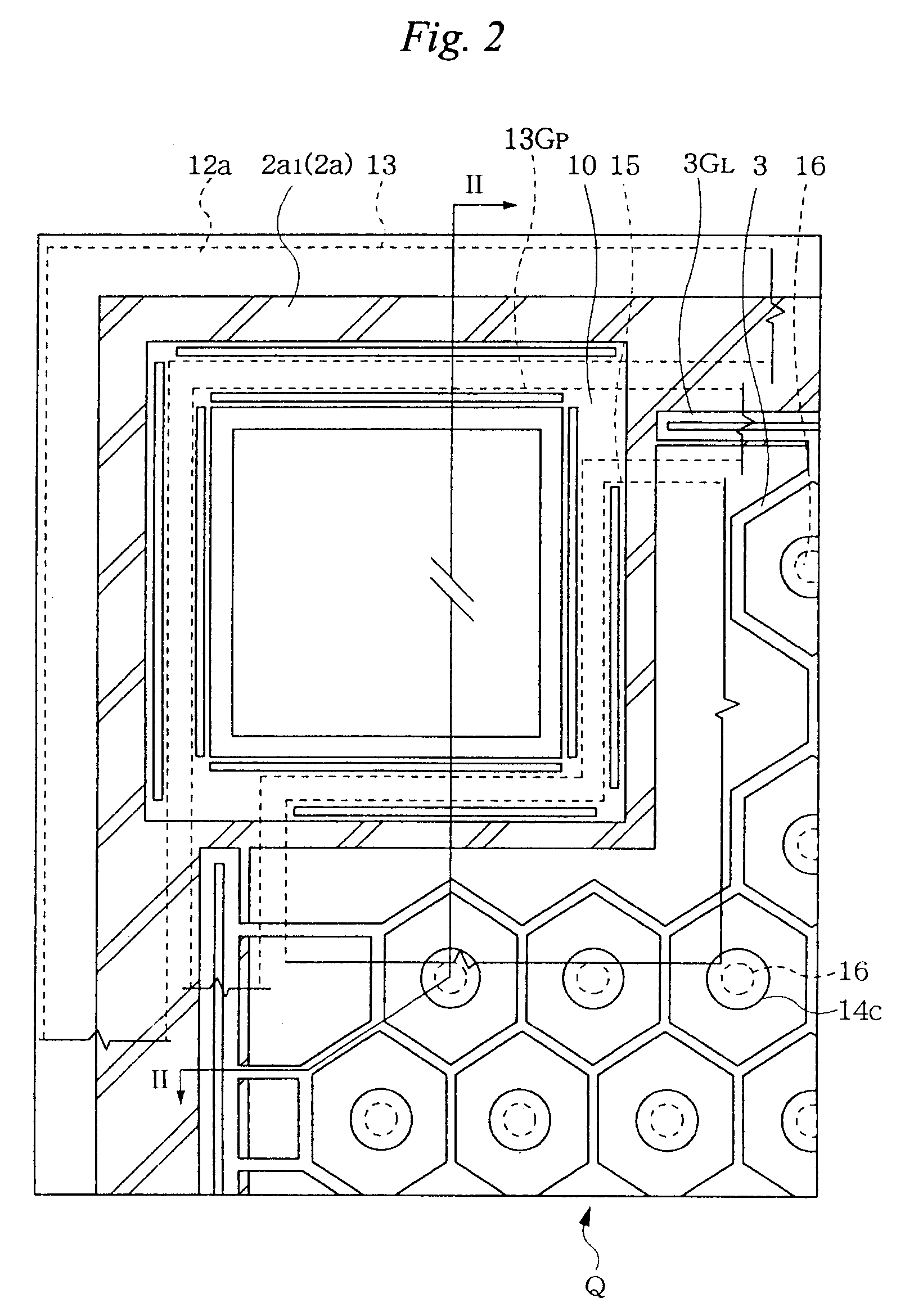Method of manufacturing a trench gate power transistor with a thick bottom insulator
a technology of trench gate power transistor and thick bottom, which is applied in the direction of semiconductor devices, diodes, electrical devices, etc., can solve the problems of reducing the performance of trench power transistor, difficult to form shallow junctions, and affecting so as to improve the gate insulation pressure resistance improve the drive capability and improve the effect of trench power transistors
- Summary
- Abstract
- Description
- Claims
- Application Information
AI Technical Summary
Benefits of technology
Problems solved by technology
Method used
Image
Examples
first embodiment
[First Embodiment]
FIG. 1 is a plan view of a semiconductor chip 1 constituting a trench power transistor as the first embodiment of the present invention. FIG. 2 is an enlarged plan view of an area A in FIG. 1. FIG. 3 is a partially sectional view taken in the line B--B of FIG. 2. FIG. 4 is a circuit diagram showing a trench power transistor and an accompanying protective diode.
A semiconductor chip 1 has a semiconductor substrate 1S formed, for example, in a plane rectangular shape. The semiconductor substrate 1S comprises a semiconductor base substance 1SA and an epitaxial layer 1SB formed thereon. The semiconductor base substance 1SA comprises, for example, an n.sup.+ -type silicon single crystal. The epitaxial layer 1SB comprises an n.sup.- -type silicon single crystal formed by, for example, the epitaxial growth. The epitaxial layer 1SB ensures pressure resistance between a source and a drain, and has a resistance value of, for example, approximately 0.25 through 0.36 m.OMEGA.cm...
second embodiment
[Second Embodiment]
The second embodiment describes a modified example of forming the gate insulator and the gate in the trench power transistor. The description in the second embodiment uses the sectional views of the gate formation region in the trench power transistor.
After steps in FIGS. 6 through 8 used for the first embodiment, the semiconductor substrate 1S is cleaned. The second embodiment keeps the opening width of the thick insulator 2b as shown in FIG. 23, namely maintaining the state in FIG. 8. Like the first embodiment, the thermal oxidation treatment is applied to the semiconductor substrate 1S to form the insulator 21 on the trench 7's inner face (side face and bottom face), and then to deposit the oxidation-resistant insulator 22. The semiconductor substrate is is then etched back. As shown in FIG. 24, the oxidation-resistant insulator 22 is left in the trench 7 and on the opening side face of the thick insulator 2b so that the insulator 21 is exposed from the trench ...
third embodiment
[Third Embodiment]
The third embodiment describes another modified example of forming the gate insulator and the gate in the trench power transistor. The description in the third embodiment also uses the sectional views of the gate formation region in the trench power transistor.
Like the first embodiment, the trench 7 is formed on the semiconductor substrate 1S as shown in FIG. 31. The thermal oxidation treatment is then applied to the semiconductor substrate 1S to form the insulator 21 on the trench 7's inner face (side face and bottom face). After the oxidation-resistant insulator 22 is deposited, an etchback process is performed to leave the oxidation-resistant insulator 22 on the trench 7's inner side face and expose the insulator 21 from the trench 7's bottom and the semiconductor substrate 1S's principal plane as shown in FIG. 32. Like the first embodiment, the thermal oxidation treatment is applied to the semiconductor substrate 1S using the oxidation-resistant insulator 22 as...
PUM
 Login to View More
Login to View More Abstract
Description
Claims
Application Information
 Login to View More
Login to View More - R&D
- Intellectual Property
- Life Sciences
- Materials
- Tech Scout
- Unparalleled Data Quality
- Higher Quality Content
- 60% Fewer Hallucinations
Browse by: Latest US Patents, China's latest patents, Technical Efficacy Thesaurus, Application Domain, Technology Topic, Popular Technical Reports.
© 2025 PatSnap. All rights reserved.Legal|Privacy policy|Modern Slavery Act Transparency Statement|Sitemap|About US| Contact US: help@patsnap.com



